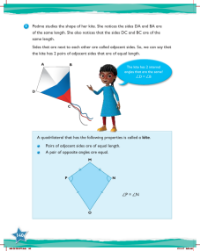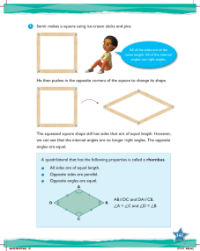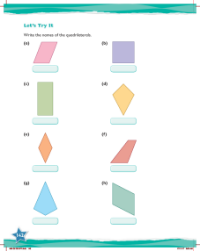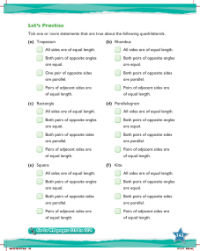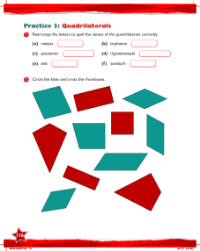Max Maths, Year 6, Practice, Quadrilaterals
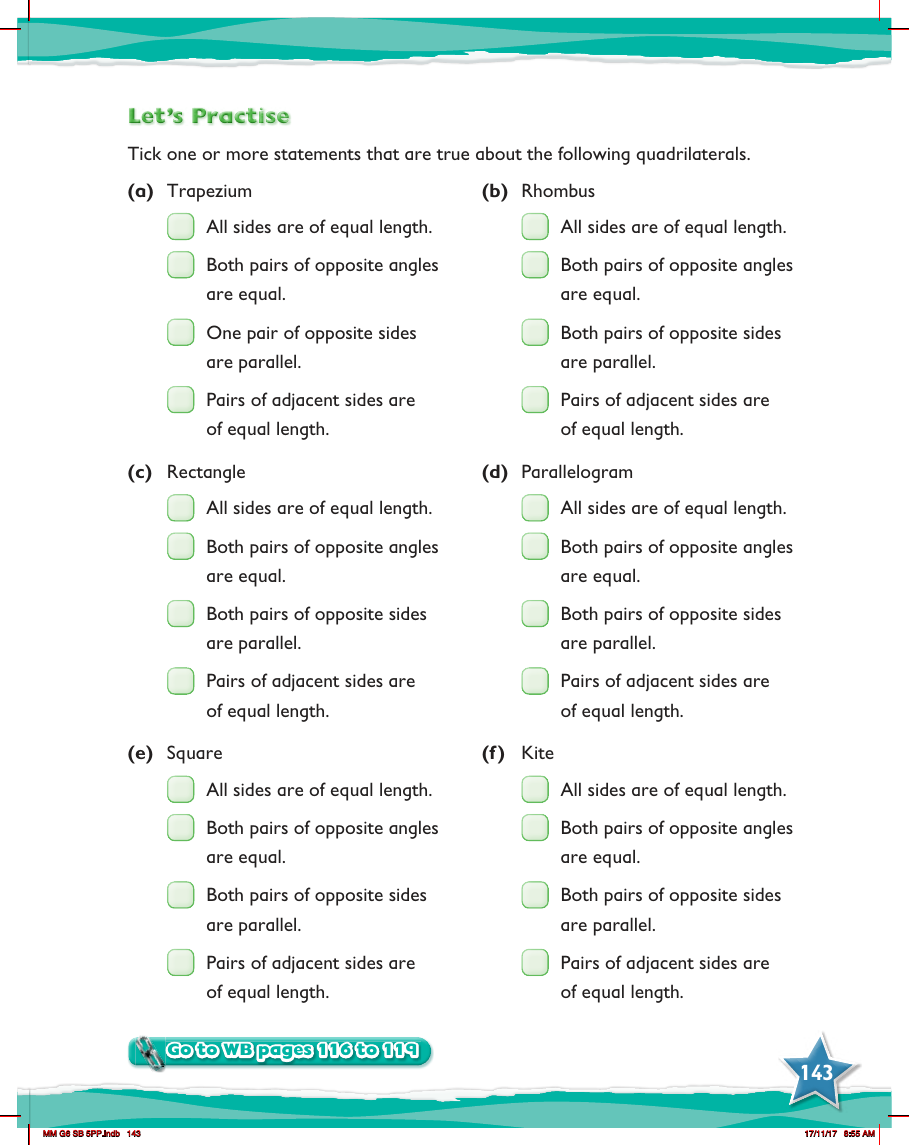
In the Max Maths Year 6 practice exercises, students are tasked with identifying the properties of different quadrilaterals. For each shape, a series of statements are presented, and students must tick those that are true. For a trapezium, the defining characteristic is that one pair of opposite sides are parallel. In contrast, a rhombus has all sides of equal length and both pairs of opposite angles are equal, but it's not specified whether the sides are parallel or not.
When considering a rectangle, students should recognise that both pairs of opposite sides are parallel, and both pairs of opposite angles are equal, although not all sides are of equal length. The parallelogram shares some properties with the rectangle, such as both pairs of opposite sides being parallel and both pairs of opposite angles being equal, but again, all sides are not necessarily of equal length. For a square, all statements apply: all sides are of equal length, both pairs of opposite angles are equal, and both pairs of opposite sides are parallel. Finally, for a kite, students must identify that pairs of adjacent sides are of equal length, and the other properties depend on the specific type of kite. To further explore these concepts, students are directed to workbook pages 116 to 119.


